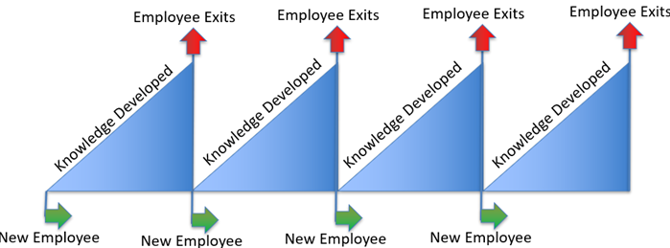Taming the Wild BOM: Why You Need a PLM System to Corral Your Data
Learn why you need a PLM system to help corral your data in our latest blog.

A term I often hear when talking to customers is “we want to become a learning organization” and this aspiration is expressed within design consultant and contractor organizations alike.

But what does this term mean beyond trying to develop a competitive edge and strive for continuous business improvement? The Business Dictionary describes it as `An organization that acquires knowledge and innovates fast enough to survive and thrive in a rapidly changing environment`. Harvard Business Review states that `Continuous improvement requires a commitment to learning` and both hypotheses I fully support, but often in organizations the basics are not always evident.
When I discuss with customers how their end of project lessons learned process is conducted, it often does not include any discussions relating to the BIM implementation, risk management processes or competencies across the project team relating to digital delivery. I would urge all organizations to use and expand upon their current lessons learned process to start that journey towards a learning organization through collecting knowledge that will inform future project delivery and business strategy. Yes of course you can still review BIM adoption rates and maturity using tools such as those from Penn State University or equivalent, but don’t forget capturing lessons learned as well so the next project is better than the last, and trends can be identified.
Every organization I have ever personally worked within always communicated that the most important resource is their employees. I am sure many of you reading this will be nodding in agreement. Of course this would be a natural, initial place to develop a learning organization, based on knowledge and a supporting culture within the business. However, knowledge invested in and retained by individuals rather than across an organization is a significant business risk. If we consider BIM Managers or equivalent titles and job roles, who naturally must soak up knowledge like a sponge, the major risk is if they leave the business the knowledge invested in and gained leaves at the same time. This can result in a saw tooth approach to knowledge development and retention. To manage this risk, succession planning and considering how training and knowledge retention is implemented is key in my opinion.

Investing in more than one employee on any training course is the first and easiest solution. It helps support succession planning, but also when implementing the knowledge gained through a training course. For example, when delivering COBie on projects, or learning how to use Dynamo, by having more than one person on the course allows for peer support following the training and an increased chance of knowledge retention. In this example, we now have two employees trained. The next obvious step is how to capture this knowledge derived from the initial training event and during implementation so it can be shared across the wider business. Documentation such as Standard Operating Procedures (SOP) add value and can be aligned to other business systems. For example, maybe this new COBie knowledge will become a short in-house course or instruction for staff to be included in future staff training matrixes. However, despite it being good practice to write an SOP, my personal recommendation is to also develop short video presentations to explain clearly the new procedure or good working practices.
We live in a multi-media consumer world and I am sure most of us would agree that YouTube might be one of the places we would search for advice or knowledge on a subject. For example, how to do something in Excel, fix a leaking radiator or learn about a new hobby. When it comes to content in the public domain it can be very variable, so having control over this content is key and this comes back to developing a learning organization. By asking all employees as standard practice to provide a short video presentation on an industry event they attended, new functionality in software such as Revit or new workflows will start to build up a significant knowledge bank that can be retained, de-risking the impact of employees leaving the business. Content that can be easily consumed and enjoyed by all employees. This approach may also have a positive impact on the culture of the business.
Finally, you need to consider having a repository for all of this knowledge whether it is in text or multi-media format. We support a platform called Pinnacle Series which has been specifically designed for the architecture, engineering and construction industry. It’s not only pre-loaded with Autodesk and a variety of software e-Learning material, but also enables you to upload your own material. Pinnacle Series provides a central online resource, methods for developing staff training plans, and may include tests for ensuring knowledge has been learned and retained by individuals.
In summary, in my opinion, to become a learning organization initially requires increased collection and sharing of knowledge, applying more rigorous and expansive lessons learned and moving away from investing in individuals in isolation to a point where succession planning and the risk of knowledge leaving the business becomes a managed process.
Talk to us about becoming a learning organization. We can work with you to achieve your business goals and implement processes that work for you.
If you would like to learn more about Pinnacle Series, click here.
Learn why you need a PLM system to help corral your data in our latest blog.
Learn about BIM to GIS Collaboration Patterns Between Owners, AEC Firms, and Municipalities in our most recent blog post.
Learn about the Dynamic Duo of Water Infrastructure Management through Autodesk’s InfoWater Pro and Esri ArcGIS in our most recent blog post.
